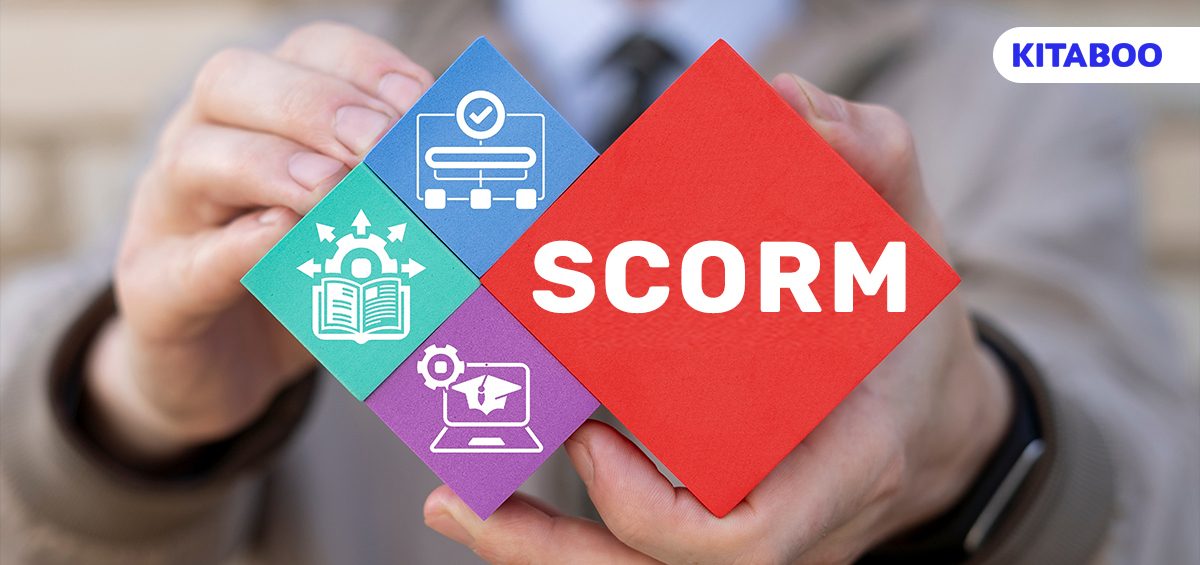Creating eLearning courses can be a very challenging task. As a creator of an online course, your objective is not only to provide information to your audience and learners. You also want to ensure that the content is consumed efficiently and adds significant value to the consumer’s knowledge base.
An effective eLearning module must also have other important elements, like quizzes, tests, activities, etc., to test the learner’s progress.
Designing eLearning modules or related products keeping all these factors in mind is not an easy task.
This is where SCORM comes into play.
SCORM put forward specific ways and methods for creating effective and efficient learning management systems.
If you are hearing about SCORM for the first time, do not worry. This article will give you all the comprehensive details about SCORM and how you can benefit from it.
What is SCORM?
SCORM is the acronym for Shareable Content Object Reference Model. All eLearning material is shareable content that is shared virtually to share knowledge and information.
Hence, if an eLearning course is published in the SCORM format, an internationally accepted format, it will be recognized by all learning management systems (LMS). This is just like how DVDs are made in a certain way so they can be recognized and read by a DVD player.
Similarly, compliance with the SCORM format ensures eLearning modules and products are read by any LMS.
Important Elements of SCORM
Two of the most important elements governed by SCORM in eLearning modules and products are its content packaging types and running time.
Content Packaging
The SCORM format specifies how each file must be structured and named in the eLearning module.
If a file is not of the right format and is named incorrectly, it will not be interpreted, launched, and tracked.
Running Time
The running time communication details specify how the learner or consumer will engage with the online module.
This is also how instructions like ‘ask the student to write their name,’ ‘inform the student they have scored 76% on this test, etc., are communicated between the module and the LMS.
Sequencing
This process ensures that the learner is not lost when they learn through an online learning module.
It helps the learners navigate to the next step and follow the right instructions, like clicking on the right button, submitting a file, etc.
Tracking Capabilities of SCORM
When a learner is sitting through an eLearning module, some data will be monitored and stored, which will then be sent to the LMS.
The data which is stored and then tracked is:
- Status of the eLearning module, i.e., has it been finished by the learner
- Marked data is the information the learner might have saved or highlighted
- Session time stores how much time the learner devoted in one sitting
- Total time is the entire duration of time a learner takes to finish the module.
- Lesson location refers to the place from where a learner left the module
- Scores are the marks scored by a learner in tests and quizzes
The status of the course is usually reported by SCORM using four terms, and they are as follows:
- Passed
- Failed
- Incomplete
- Complete
SCORM Package
Here are the contents each SCORM must have:
Resource Files
These can be understood as the several parts that make up the course.
These files are then used by the content package to establish the module and its structure.
XML Manifest Files
These are also referred to as the manifest files allowing the creator to import and launch the eLearning module in the LMS.
These files also help understand the hierarchical structure of each file in the package.
Versions of SCORM
As of now, three versions of SCORM have been released.
Each version is the updated version of the previous, offering extended capabilities to the users.
SCORM 1.1
This was the first version of SCORM, which failed to gain wide recognition.
It was updated shortly after, and only a few products now support SCORM 1.1.
SCORM 1.2
SCORM 1.2 solved a lot of problems SCORM 1.1 had.
It also became more famous, and many major LMS platforms continue to support SCORM 1.2.
SCORM 2004
When SCORM 2004 was launched, it was called SCORM 1.3. It is the latest release and has all the updated features and tools.
One of the major updates of this version is that it allows the content creator to change behavior both within the SCORM files and the between the SCORM files, i.e., being able to customize their operations in tandem with each other.
This allows the creators to create more creative and interactive content.
As of now, there is no news regarding an updated version of SCORM 2004.
Benefits of Using SCORM
Some of the major benefits of SCORM which will highly benefit your eLearning module are as follows:
- It is recognized by all LMS platforms allowing you to tailor-make your content for the best.
- It will enable you to create the content once and deploy it as often as you want from multiple systems.
- The tracking capabilities offered by SCORM offer great insight into the specific requirements and demands of the consumer. You can then customize and edit your module accordingly.
- It allows you to save time and money in the long run.
- After following SCORM guidelines once, you can migrate from one LMS to another easily and quickly.
To Wrap Up
If you plan to create your eLearning module and product, you must follow the SCORM guidelines. It might seem like a complex task initially, but following it will help you increase your content engagement and effectiveness.
However, as a second option, you can also opt for platforms like KITABOO, which can help you create SCORM-friendly eLearning modules. Kitaboo is one of the best digital players in the market, and it will allow you to deliver a great experience to your learners, teachers, and instructors.
Check it out now and benefit from its advanced features like high security, great accessibility, user-friendliness, various integrations, and much more!
Contact our expert team now and get started!
To know more, please write to us at kitaboo@hurix.com
Suggested Reads:
Discover How An Ebook Conversion, Publishing & Distribution Platform Can Help You
Kitaboo is a cloud-based content platform to create-publish & securely distribute interactive mobile-ready ebooks.
You May Also Like








